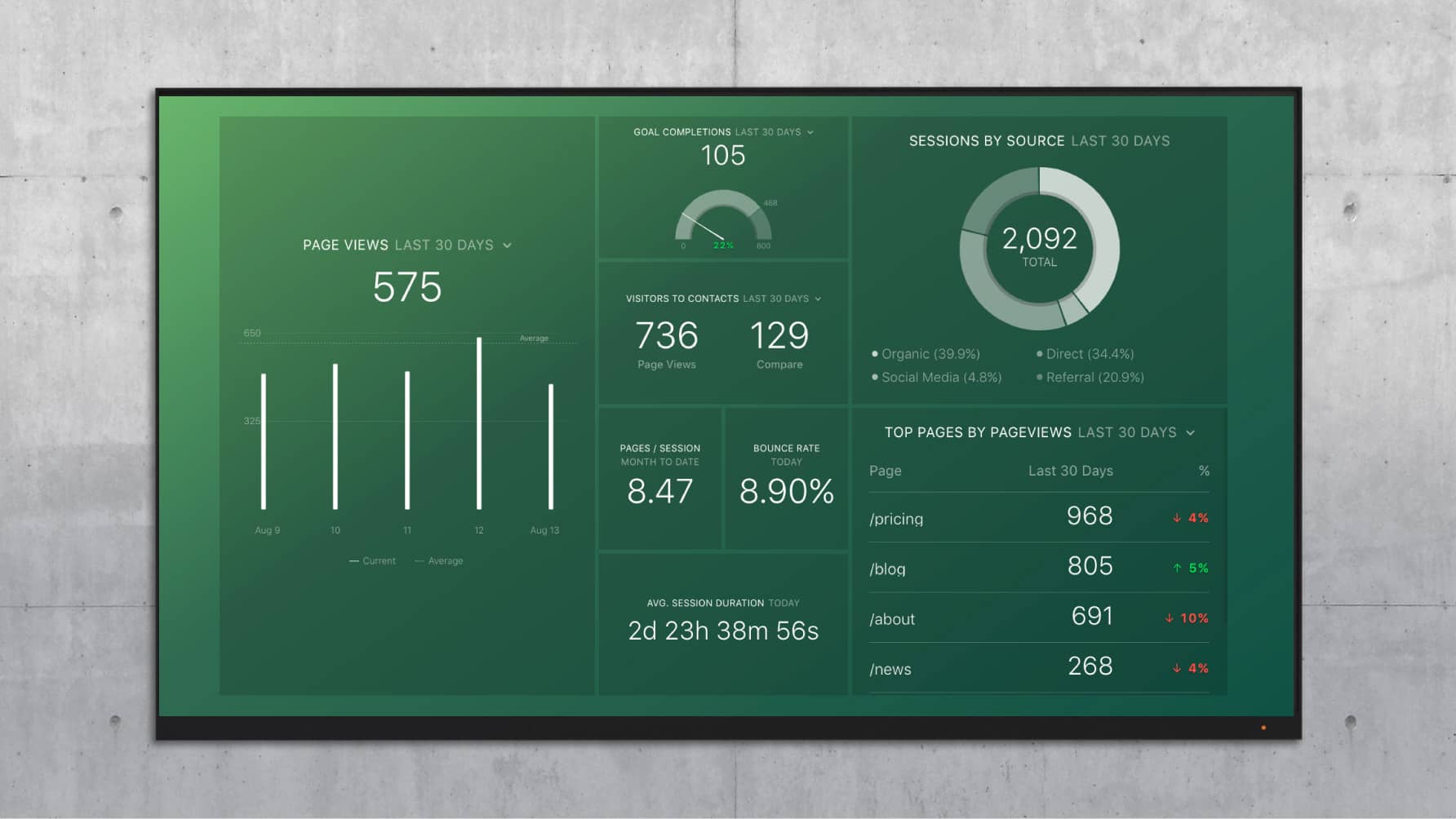Table of contents
“So, what work have you done for us lately?”
If you provide professional services, you NEVER want to hear these words from your client.
When you do hear it, the voices in your head might even be defensive:
- “How come they aren’t engaged with what we’re doing for them?!”
- “Did they see the carefully-formatted report I sent them last week?”
- “I can’t explain it any more simply than I already have!”
Jeff Coon of Stream Creative, a Platinum HubSpot Agency Partner and Certified Databox Partner, was tired of hearing these voices. So, he took responsibility for this miscommunication with clients and built processes to help his agency avoid it completely.
Through some research, Jeff realized the importance of connecting the value of their services to the emotional needs of their clients. Jeff discovered that making rational appeals is actually the last thing you should be doing.

“The buying brain is made up of areas 1 and 2. A lot of times, when salespeople come into a meeting, it is all about ‘Here is what we can do for you’ and all of these bells and whistles, but they forget about the trust factors that they should be thinking about. How can you create an emotional connection?”
 Jeff Coon
Jeff Coon
And this same logic applies to big investments! Emotions are equally important for big decisions, like hiring an agency. “Even big purchases, like buying a house or car, are based on an emotional connection to the brand! You rationalize it later”, says Jeff.
With this understanding, Stream Creative redesigned their processes with the goal of ensuring clients understand that Stream was as emotionally invested in their success as they were.
Here’s how they did it…
1. Build Trust In The Sales Process
Their client proposal process was not helping them establish trust. In fact, it was causing confusion. Stream would come up with clever campaigns, spell out detailed processes and devise clever brand strategies. But, when they submitted the proposal to the client, they’d often hear crickets.
Jeff laid out a frustrating interaction. “Here is a typical process that we would see:
- A prospect reaches out, asks for a presentation and proposal by the following Tuesday
- Stream would submit the proposal on the following Monday
- The Stream salesperson would follow up multiple times before hearing ‘I haven’t had a chance to look at it yet’ or ‘I don’t understand this.'”
Jeff aimed to completely reverse this. His team created a template for a simple custom landing page that could be used as a proposal after an initial meeting.
The landing page starts with a custom image of the client’s team. (He could usually find an image like this on a LinkedIn or Facebook page.)

Then, it includes a brief overview of the services that Stream recommends. In the following section, Stream records custom videos that provide explanations of the rationale for each recommendation.
Next, Stream includes previews of what their work might look like.

After covering the client’s needs, Stream shares a few testimonials from previous clients and a bit more info about the agency.
Wistia analytics and HubSpot document analytics also inform the Stream sales team about which parts of the proposal have actually been reviewed by the client. So, when they need to follow up, they can fill in the gaps that have not been seen by the client.
2. Share Progress on Key Initiatives
Treating service delivery like a black box is the second mistake many professional services organizations make.
Stream uses Basecamp to share progress with their clients. Their clients can check in at any time to see which deliverables are being completed next. But, this is still pretty impersonal- it is just a shared project management tool.
To help remind clients about the reasons they are completing certain tasks, Stream account managers also create personalized videos with tools like Soapbox. The videos explain the decision-making behind campaigns.
Not so coincidentally, this is another reason why Stream Creative includes video in the sales process, “We like to test whether clients are comfortable with video communication. If not, they may not be the right fit for our agency.”
3. Provide Real-Time Access to Performance Data
In the past, Stream was frustrated with the way they shared data with clients. Since they are design experts and want that to reflect in everything they do, they would spend hours carefully compiling each monthly report. After manually copying and pasting data from every marketing service, an account manager would need to format it into a Powerpoint. This left them very little time to actually analyze the data.
Also, marketers at the client company would frequently ask their account managers for updated data for their own monthly internal presentations, forcing Stream to drop what they were doing and produce a 1-off report.
Now, they use automated dashboards to keep track of data in real-time. They spend much less time assembling the monthly report, and more time on making data-driven recommendations. They share the dashboards with clients via streaming URLs so the client can check their own data at any time.
Here is an example of one of their dashboards that tracks landing page metrics:

Stream also uses these dashboards to focus the client’s attention on the right topics. Jeff has watched clients ask over and over again, “Well, why don’t we do project X?”
Project X might be more videos, a Pinterest strategy or a dreaded request to “make a viral video.”
Coon knows they need to drive the strategy and putting numbers front-and-center helps them do that, “We don’t want to look back on the year and say, ‘We delivered 12 videos because the client asked for it’. Instead, we want to refocus the conversation around annual goals, and help them understand that we are running the campaigns to help them meet those goals.”

So, in addition to real-time client tracking dashboards, Stream team uses SMART goals to keep them and their clients focused on the activities that will help their clients get where they set out to go when they initially engaged Stream Creative.
Want to hear all this in Coon’s words? Here’s a video version of this post.

Establishing Trust Requires Little Extra Effort, And Goes A Long Way
If you look at all the activities discussed above, you will notice that Stream does not actually spend more time executing these new processes, than they did with the old:
- They were already creating proposals
- They were already sharing weekly tasks with the client
- They were already presenting monthly results
In fact, they reduced the time they spent creating proposals and manual monthly reports by creating re-useable templates that can be cloned and easily customized. They turned report creation into a one-time activity instead of a monthly activity, saving hours per month!
More important than saving time, though, these changes allowed them to establish and maintain trusting relationships. Through these 3 processes, they more effectively demonstrate how their work produces an impact on their client’s business. In every interaction, whether it’s the initial proposal, a report of tasks accomplished or reporting results, they remind their clients why they’re doing it and how they’re helping their client progress towards their goals.
As a result, Stream Creative has been able to continue to grow their agency too. By signing on and continuing to renew their ideal clients, they’ve set themselves up to hit their own goals and achieve what’s emotionally important to them too.
How are you establishing trust with clients? How is that helping you build your business?













